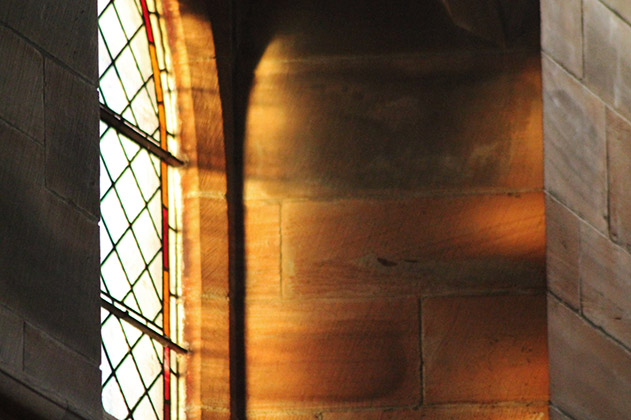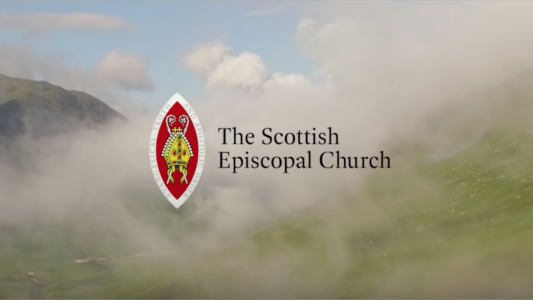Download Guide (pdf)
Download GASDS record (word)
Download GASDS record (excel)
Download GASDS record (pdf)
The Gift Aid Small Donations Scheme (“GASDS”) allows all charities to claim a Gift Aid like “top up” payment on small cash donations of £20 or less totalling up to £5,000 a year. The Scheme currently therefore permits “top up” payments of up to £1,250 a year to charities that can demonstrate that they have small donations totalling £5,000 a year. (In some specific cases the amount on which “top up” payments can be claimed will exceed £5,000 and therefore some charities may be able to claim more than £1,250 a year in “top up” payments.)
This Guide provides an outline of the Scheme and how it is likely to apply to most churches within the Scottish Episcopal Church (“SEC”). The Scheme rules are however complex and those requiring more detailed information are referred to the Further Information section at the end of the Guide. (A decision tree is included at Appendix 1 to assist in determining if a GASDS claim can be made.)
Does this replace Gift Aid?
No. GASDS is designed to be run in conjunction with the conventional Gift Aid Scheme.
Who can claim?
Any church that has successfully been reclaiming Gift Aid for a number of years should be eligible to claim “top up” payments under GASDS. More specifically a church must:
- Be registered as a charity for tax purposes for at least two consecutive tax years before the start of the tax year for which the “top up” claim is being made.
- Have made successful Gift Aid claims in at least two of the previous four tax years without a gap of two or more years between Gift Aid claims or since the last Gift Aid claim. (Note – if there is a gap of more than two consecutive years in which no Gift Aid claim has been submitted then claims before that two year period are disregarded.)
- Not have incurred a penalty relating to Gift Aid or GASDS claims in the current or previous tax year.
How much can be claimed?
Every charity will have a core element of small donations of up to £5,000 a year on which “top up” payments can be claimed. (Such donations can be received anywhere in the UK.) In addition to this core element there is a further community building element of £5,000 relating to donations received in each community building in which the charity undertakes charitable activities.
The definition of community buildings is such that most church buildings will qualify (as long as they are used at least six times a year and at least 10 people are in attendance on each occasion). Other buildings used by churches (such as schools) may also qualify. Any building whose primary purpose is commercial is unlikely to qualify. Buildings that are adjacent to each other will be considered to be one building. (So a church hall attached to a church building does not attract an additional £5,000 community buildings element but a church hall located along the road from the main church building will be eligible for its own community building element.)
For most churches within the SEC there is likely to be a core element of £5,000 a year plus a further £5,000 a year relating to funds raised in a church building. For a number the situation may be more complex. Linked charges operating as one charity but with services undertaken in two or more church buildings may be eligible for the core element of £5,000 plus an additional £5,000 in relation to each of the church buildings. Churches conducting services or other events in other community buildings (such as schools) may also be eligible for a further £5,000 community building element.
For a more details regarding the operation of the community building element see section 5 of Gift Aid Small Donations Scheme: a comprehensive guide produced by Stewardship. (See Further Information section below.)
“Top up” payments are calculated in the same way as Gift Aid and are therefore related to the basic rate of income tax. The maximum amount that can be claimed on each £5,000 element at the current rate of income tax (20%) is £1,250.
The total value of small donations on which a claim can be submitted is also limited to no more than 10 times the amount on which normal Gift Aid is claimed. Any church receiving normal Gift Aid donations of less than £500 a year will therefore need to be mindful of this additional cap on the level of “top up” claims they can submit.
What donations qualify for “top up” payments?
Only donations from individuals qualify. They must also be:-
• In cash (not cheque, direct debit etc)
• £20 or less
• Received in the UK
• Deposited in a UK bank
Cash received from sales of works, raffles etc are not considered to be donations and are therefore ineligible.
Any donation from an individual for whom the church holds a current Gift Aid Declaration is ineligible.
What records should be kept?
The majority of eligible donations are likely to be offerings received during church services either as loose cash or in numbered envelopes from individuals who have not signed a Gift Aid Declaration. A record will need to be maintained that adequately identifies such eligible cash donations. Existing methods for recording regular envelope donations will need to be modified to ensure that donations from envelope givers that have not signed a Gift Aid Declaration are clearly identified as eligible or ineligible. (Cheques or sums in excess of £20 being ineligible.) An example of a record sheet is provided at Appendix 2 and is also available to download from the SEC website in a number of formats (excel, word, pdf).
If it is likely that a church will wish to use its community building element in addition to its core element consideration should be given to maintaining a record of the number of individuals attending church services particularly if it is likely that HMRC might question if these were less than 10 people in attendance at any service.
Some form of running record of the eligible donations received should also be maintained. (A separate record being maintained for each tax year – 6 April to 5 April.)
Sufficient record should also be maintained to be able to link donations on which “top up” payments for claims to cash being deposited in a UK bank.
How can I tell if a donation is for £20 or less?
Cash donations should only be considered to be ineligible if you have evidence that they were part of a gift in excess of £20. Any notes for denominations in excess of £20 should of course be disregarded. Notes totalling £20 folded/banded together, in an envelope or handed directly to the Treasurer or some other individual or otherwise known to be part of one gift should not be considered to be eligible.
How do I claim?
Claims for “top up” payments are made in the same way as those for normal Gift Aid. These must be submitted using the Charities Online system introduced in April 2013.
When can I claim?
The GASDS is operated on a tax year basis. The Scheme came into operation at the beginning of the current tax year on 6 April 2013. Claims can be submitted at the same time as normal Gift Aid claims.
Time limits for submitting GASDS claims are however shorter than those for normal Gift Aid. All GASDS “top up” claims must be submitted within two years of the end of the tax year to which they relate.
Anything else to consider?
Whilst GASDS may provide some welcome additional income it is important to remember that it does not replace the traditional Gift Aid scheme – indeed the use of GASDS requires an unblemished and current Gift Aid history. Regular givers should still be encouraged to sign Gift Aid Declarations wherever possible and to ensure that all their giving, both regular and additional one-off donations, are subject to Gift Aid Claims. Gift Aid envelopes for one-off donations should still be made available for use by church visitors.
Further information
HMRC website has a specific section describing GASDS (here)
Two excellent guides are produced by Stewardship and are available to download from their website (www.stewardship.org.uk)
Gift Aid Small Donations Scheme: a practical guide (here)
Gift Aid Small Donations Scheme: a comprehensive guide (here)
The legislation and regulations are available for download
Small Charitable Donations Act 2012 (here)
The Small Charitable Donations Regulations 2013 (here)
Appendix 1 – GASDS decision tree (download as pdf)
Appendix 2 – GASDS record (download as pdf)
June 2013
The General Synod of the Scottish Episcopal Church does not accept responsibility for any loss or liability which may arise from reliance on information or expressions of opinion contained in this document.
General Synod of the Scottish Episcopal Church
Scottish Charity No SC015962







